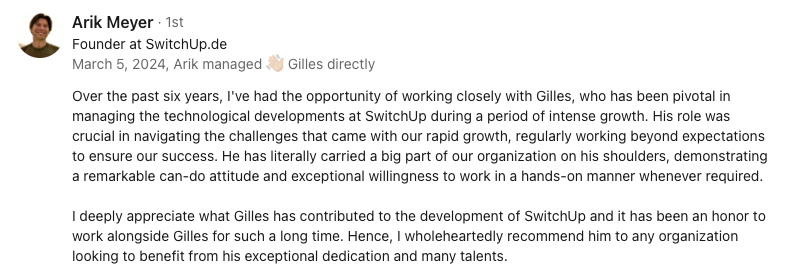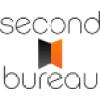Abstract:
The article addresses the challenges faced by startups in the smart device sector navigating European regulations, particularly the General Data Protection Regulation (GDPR). It emphasizes the need for startups to comply with stringent data protection standards while maintaining innovation. By exploring GDPR's impact, the article suggests strategies such as embedding Privacy by Design, conducting Privacy Impact Assessments, and appointing Data Protection Officers to ensure compliance and build user trust. It highlights the importance of understanding additional regulations like the ePrivacy Directive and the varied implementations across EU member states. The article further discusses building efficient smart device ecosystems through open standards, cloud services, and user-centric design, using examples like Tado°, Netatmo, and Eve Systems to illustrate successful implementations. Startups are encouraged to leverage smart devices for market differentiation by tapping into trends like sustainability and health monitoring and incorporating innovative features such as AI-driven personalization. Effective resource management, scalability through cloud services, and strategic partnerships are also explored as ways to optimize growth. Ultimately, the article suggests that embracing European regulations can be an opportunity for startups to build trust, foster innovation, and secure a competitive edge in the smart technology market.
Navigating European regulations is challenging for startups in the smart device sector. The General Data Protection Regulation (GDPR) sets high standards for data protection, pushing companies to comply while still fostering innovation. How can startups meet these strict requirements without hindering creativity? This article explores GDPR and other regulations, offering strategies for compliance and innovation. Let's see how startups can thrive in this environment, build trust, and advance technology.
Understanding the European Regulatory Framework
In the fast-paced world of smart devices, navigating the European regulatory landscape is crucial for startups. Central to this is the General Data Protection Regulation (GDPR), which sets stringent standards for data protection and privacy. These regulations significantly impact various sectors within the smart device industry, such as healthcare, home automation, and wearable technology. Understanding these specific impacts can help startups devise effective strategies to stay compliant and innovative.
GDPR and Its Implications
GDPR transformed how companies handle data across the EU. Startups integrating smart devices must understand GDPR's core principles, which focus on user data protection and privacy. This includes obtaining explicit user consent and ensuring transparent communication about data use. Privacy by Design is essential from the start of product development. From my experience, embedding these principles early not only ensures compliance but also builds user trust, which can be a competitive edge. I recall a situation where our startup faced challenges in aligning our product with GDPR requirements. By prioritizing user consent and data transparency, we not only achieved compliance but also gained customer trust, which significantly boosted our market presence.
Balancing innovation with GDPR compliance is tough. Startups often lack resources and face pressure to innovate quickly. Yet, non-compliance can lead to hefty fines and reputational damage. Aligning product development with GDPR's strict requirements can stifle creativity unless approached strategically. By examining case studies on GDPR compliance, it’s clear startups need to be pragmatic, adapting quickly to data privacy changes.
Startups can adopt actionable strategies like conducting Privacy Impact Assessments (PIAs) and appointing Data Protection Officers (DPOs). PIAs help identify privacy risks early, allowing proactive solutions. DPOs guide compliance efforts and foster a culture of data protection. Integrating these practices helps startups navigate regulations effectively, building a strong foundation for trust and security.
Navigating Other European Regulations
Besides GDPR, startups must consider other regulations like the ePrivacy Directive, which governs electronic communications. This complements GDPR by focusing on communication confidentiality and internet user tracking, affecting how smart devices operate in the EU. Understanding these regulations is vital for full compliance, as they often intersect with GDPR.
The EU's diverse landscape adds complexity, as each member state may implement regulations differently. This diversity requires tailored compliance strategies for various national frameworks. Recognizing national variations is crucial, as they can significantly impact smart device development and use in different markets. For instance, in Germany, stricter data retention policies may require more robust data management systems compared to other countries.
To stay updated on regulatory changes, startups should engage in regular learning. Subscribing to legal updates and consulting with regulatory experts provides timely insights into the regulatory environment. Staying informed allows startups to adapt to new rules, ensuring ongoing compliance and reducing penalty risks. By fostering a proactive compliance culture, startups can focus on innovation while navigating the European regulatory framework.
Building Effective Smart Device Ecosystems
Creating an efficient smart device ecosystem is crucial for startups entering the growing Internet of Things (IoT) market. It involves aligning technology, user design, and interoperability for comprehensive functionality and satisfaction.
Steps to Create Seamless Ecosystems
Open Standards for Interoperability: Adopting open standards is key to building seamless ecosystems. Protocols like MQTT and CoAP ensure devices from different manufacturers can communicate effectively. Open standards enhance device compatibility and reduce technical conflicts, allowing users to integrate various devices into one cohesive network.
Leveraging Cloud Services: Cloud services play a vital role in enhancing device connectivity and data management within smart ecosystems. Using platforms like AWS or Google Cloud provides scalable infrastructure that grows with the ecosystem. Cloud solutions offer flexibility to adjust resources based on demand, facilitating efficient data processing and storage without maintaining physical servers.
The Role of User-Centric Design: User-centric design ensures smart device ecosystems are intuitive and engaging. By focusing on user needs, startups can create devices that are functional and enjoyable to use. Iterative testing and feedback refine interfaces to match user expectations, ensuring easy adoption.
Successful Implementations in European Startups
Tado°’s Smart Climate Control: Tado°, a German company, specializes in climate control solutions that sync with home automation systems. Their approach optimizes energy usage, allowing users to save on utility bills without sacrificing comfort. Tado° showcases how smart ecosystems can improve daily living while promoting energy efficiency.
Netatmo's Cross-Platform Integration: Netatmo, in France, offers smart thermostats and security cameras that work with various platforms to enhance energy management and convenience. By focusing on seamless interconnectivity, Netatmo improves user experience and positions itself as a leader in smart device solutions.
Eve Systems’ Focus on Privacy: Eve Systems, from Germany, focuses on privacy and local control in the smart device market. Their HomeKit-compatible products prioritize security, appealing to users concerned about data privacy. Eve Systems demonstrates how focusing on privacy can differentiate a brand in the competitive smart devices landscape.
Leveraging Smart Devices for Market Differentiation
In a competitive landscape, European startups must use creative strategies to stand out. Smart devices offer a powerful way to differentiate through tailored applications and cutting-edge features.
Identifying Unique Opportunities
To find a market niche, startups must analyze emerging trends and consumer demands. Reports suggest sustainability, home automation, and health monitoring are popular with consumers. Startups can tap into these areas to tailor their smart device offerings, aligning them with these themes.
Innovative features capture attention and retain customer loyalty. Features like voice control, AI-driven personalization, and seamless integration attract tech-savvy consumers and encourage engagement. By embedding such functionalities, startups can establish a strong market presence. For example, a startup could introduce a smart home system that integrates renewable energy sources, appealing to eco-conscious consumers.
Positioning as Leaders in Smart Technology
Establishing thought leadership is crucial for startups aiming to lead in smart technology. Engaging with industry media and participating in tech conferences builds credibility and visibility. This exposure attracts customers and garners interest from investors and partners.
Collaborating with larger companies or institutions bolsters a startup's reach and credibility. Strategic partnerships facilitate technology sharing and extend market access, providing startups with resources and networks.
Continuous innovation and active customer engagement are essential to maintain leadership. Investing in research and development keeps offerings fresh and anticipates future trends. Regular feedback from users guides product refinement, ensuring innovations remain relevant.
Resource Optimization and Scalability in Smart Device Development
For startups eager to thrive, managing resources while ensuring scalability is crucial. This section explores strategies that help optimize resources and facilitate growth.
Techniques for Effective Resource Management
Lean Startup Methodology in Smart Device Development: The Lean Startup methodology helps optimize resources by minimizing waste and promoting iterative development. It emphasizes a cycle of Build-Measure-Learn, focusing on creating a Minimum Viable Product (MVP) to collect feedback and refine products.
Cost Savings with Open-Source and Low-Code Platforms: Using open-source software and low-code platforms helps control costs. Platforms like GitHub and OutSystems allow rapid prototyping, reducing barriers to entry and freeing up resources for other tasks.
Scalability through Cloud-Based Services: Cloud platforms like AWS, Google Cloud, and Microsoft Azure provide scalable, flexible infrastructure solutions. These services allow startups to dynamically adjust resources based on demand, ensuring operational efficiency.
Balancing Innovation with Strategic Leadership
Innovative growth requires strategic leadership to align technical goals with business objectives.
Cross-Functional Teams for Aligned Objectives: Cross-functional teams bridge the gap between technical development and strategic planning. By integrating diverse skills, they ensure technical decisions align with business goals.
Adaptability through Agile Methodologies: Agile methodologies like Scrum or Kanban foster a flexible development environment where iterative feedback and adjustments are part of the norm. This adaptability is crucial for innovation.
Growth through Strategic Partnerships: Strategic partnerships and ecosystem engagement drive innovation and market expansion. Collaborating with larger firms provides startups with resources and expertise that may be beyond their reach.
Competitive Edge through Ecosystem Management
Managing smart device ecosystems strategically can be a significant differentiator for European startups. By leveraging interconnected systems, companies can innovate continually while maintaining strong customer relationships.
Driving Product Innovation and Customer Engagement
Interconnected ecosystems drive product innovation. By fostering a network where devices communicate, startups can push functionality boundaries. Equally critical is maintaining customer engagement through personalized experiences and regular updates.
Effective Ecosystem Management: Case Studies
Successfully managing smart device ecosystems provides startups with a competitive edge. Companies like Tado°, Netatmo, and Eve Systems excel in this sphere.
Long-Term Strategies for Maintaining a Competitive Edge
To sustain a competitive advantage, startups must focus on long-term strategies emphasizing adaptability and foresight.
Continuous Innovation and Adaptation
Continuous innovation and adaptation are crucial for staying ahead. Startups need to embrace a mindset of perpetual growth, always seeking ways to enhance products and services.
Strategic Foresight and Planning
Strategic foresight and planning are essential for competitiveness. By employing robust planning techniques, companies can craft long-term visions guiding their strategies.
Data Analytics for Strategic Decision-Making
Leveraging data analytics is integral to informed strategic decisions. By analyzing data, startups gain insights into trends, preferences, and efficiencies, driving strategic planning.
Embracing the European regulatory framework is not just a challenge but an opportunity for startups in the smart device sector. By understanding and integrating GDPR's requirements, companies can build trust and foster innovation. Strategies like conducting Privacy Impact Assessments and adopting open standards are crucial. These approaches ensure compliance and position startups to lead in the smart technology market. Focusing on privacy, user-centric design, and seamless integration can differentiate a brand and drive growth.














